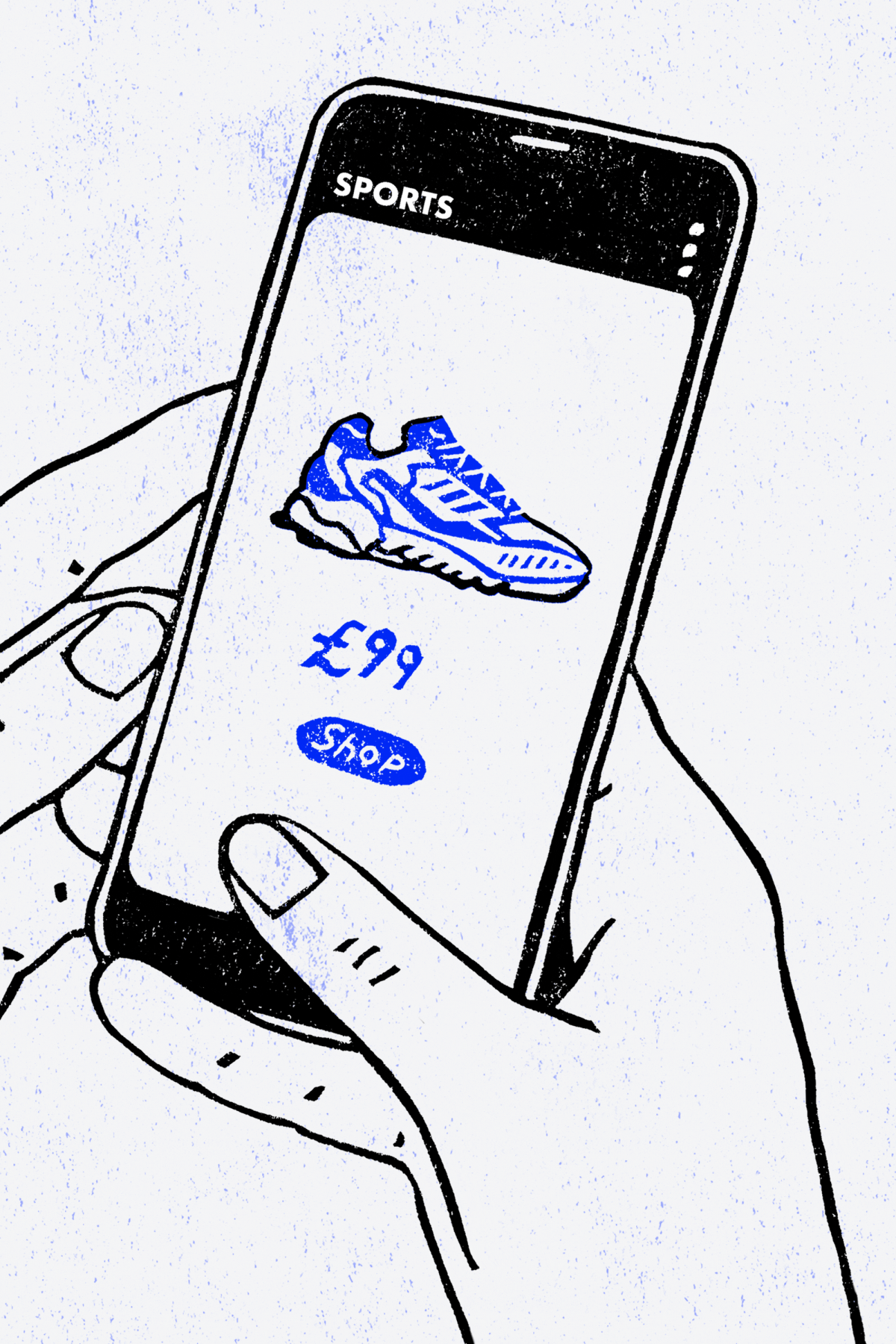Snapchat’s users have become conditioned to sharing lens-altered selfies. Soon its 229 million users will be able to snap and shop lenses on both head and foot.
Lens-enhanced “shoefies” will allow users to digitally “try on” shoes and shop them, much the same way they try on makeup and sunglasses. Using augmented reality, the new tool takes the social media site one step closer to enabling users to digitally try on a full wardrobe, and in turn, attract the fashion industry’s advertising spend.
Tech companies are rushing to ramp up their e-commerce solutions as Covid-19 shifts consumer behaviour online. Social media apps have been trying to tackle social commerce for years, reasoning that converting shoppers will drive more brands to advertise on the platform, a more lucrative revenue driver than the tiny commission gained from any sales that happen on the platform. While Snapchat has introduced updates that make it easier for people to discover, advertise and buy products on the platform, Instagram has dominated the social shopping conversation with multiple shopping-centric features including product tagging, Checkout and a tab devoted to shoppable posts. TikTok is also offering a “Shop Now” button, tested by Levi’s.
But Snapchat is in a unique position: it has a largely Gen Z and millennial audience and sophisticated augmented reality lenses are endemic to the platform, which is a natural complement to fashion, who has struggled to solve the problem of online try-on.
“We used entertainment to educate the mass consumer on how to enable AR,” explains Carolina Arguelles, who leads its global product marketing for the Snapchat camera. Now “we’ve moved from pure entertainment and expanded the use-case. And so with brands, it’s a really exciting time, especially in fashion and beauty. The Snapchat camera is connecting brands to their audiences in new ways.”
A new augmented reality
While puppy lenses and rainbows aren’t an obvious bridge to shopping, Snapchat has been playing the long game on augmented reality. It reports that more than 170 million users engage with AR daily, nearly 30 times a day.
To get there, Snapchat had to partner with an external developer called Wannaby, who worked on a similar thing with Gucci’s Ace sneakers in Gucci’s own app. The new shoe try-on feature will allow users to try on products or click out to buy the product (which Snapchat calls shoppable AR) and also lets brands gauge customer response to product launches and understand purchase intent, says Wannaby CEO Sergey Arkhangelskiy. One brand that worked with Wannaby found that customers who interact with AR are twice as likely to make a purchase; another noted that customers who used AR try-on before purchasing returned 30 per cent less than the customers who did not.
Machine learning technology from Wannaby, which detects and maps the user’s foot to digitally dress it in sneakers, will allow Snapchat users to try on shoes in the app.
© Snap Inc.

Snapchat has more plans to launch social e-commerce via AR. Take Scan, which uses the camera screen to scan a specific item — such as a barcode or a logo — to trigger a specific experience. Cosmetics brand Too Faced is using it for makeup tutorials. Louis Vuitton is using its logo to trigger a “virtual installation” that includes an image of its iconic suitcases. A new feature called “voice scan” surfaces relevant lenses based on voice commands, so a user could say, “Hey Snapchat, make my hair pink” or “put a beauty filter on my face”.
“What makes [AR] so compelling is this ability to bridge the online and offline world, and compensate for experiences that you may normally only get in-store,” says Kathleen Gambarelli, group product marketing manager at Snap Inc. “It’s not a complete replacement, but the ability to ‘try makeup on’ with L’Oréal or walk into a virtual Kohl’s store opens up possibilities for experiential shopping.”
Estée Lauder is investing on the app because it allows for consumer choice, rather than prioritising a lens based on purchasing a top advertising spot, according to Damon Burrell, SVP of corporate marketing, North America, for The Estée Lauder Companies. “Instead, [lenses] are targeted based on who the consumer is and how they interact with the platform.” For example, Burrell says, if a user is interacting with wellness content, Snapchat will serve up lenses, products and brands that offer similar messaging. This, he says, creates an “authentic experience”, “ultimately leading us to be top-of-mind when the consumer is making a purchase decision”.
“Scan” allows users to scan logos and bar codes to trigger beauty and shopping-related AR experiences.
© Snap Inc.

Snapchat isn’t the only tech company investing in AR. Like Snapchat, Instagram allows AR try-on for makeup and sunglasses. It hasn’t expanded AR try-on to shoes or clothes, but filters can be triggered by a specific design, like a logo. Through this, one company created a T-shirt that lets people “change” the design of their shirt through AR. And Pinterest, while not a social media platform, added makeup try-on in January. TikTok might not be far behind: it is preparing to offer an AR ad format, but it is not clear if this will include try-ons.
“TikTok has eaten Snap’s lunch in terms of being the epicentre of culture among younger generations,” says Rachel Tipograph, founder of digital media analytics company MikMak. Thus, she says, Snap will feel increased pressure to build products like dynamic ads (which recommend products to users) and AR shopping, which both allow brands to measure their return on investments.

